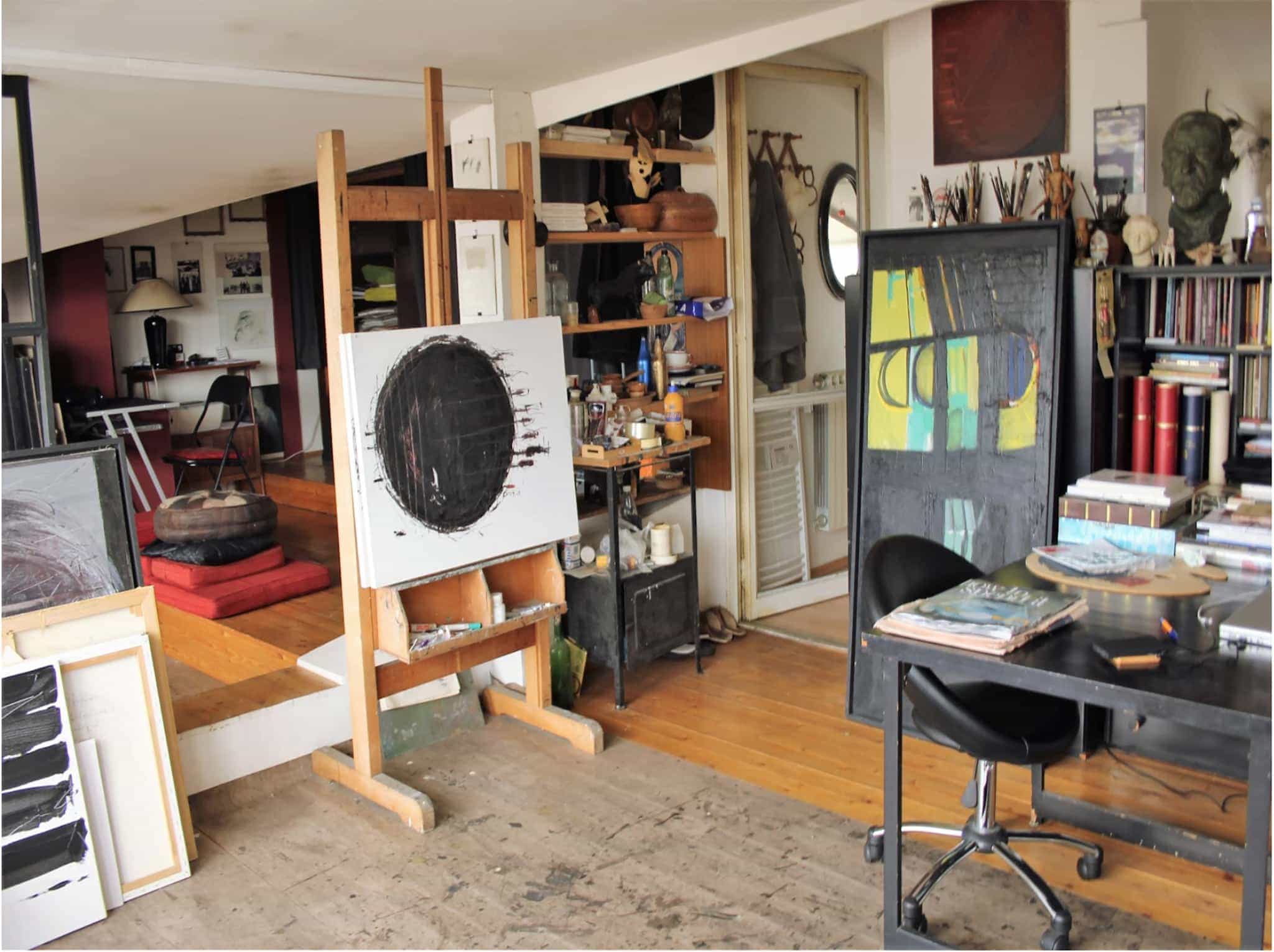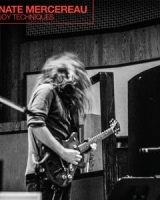Painting in Macedonia: The dramatic work of Maria Pavlovska

Studio of Taki Pavlovski in Skopje, Macedonia (FYROM). Maria’s early work can be seen on the easel.
Maria Pavlovska picks me up from the Alexander the Great airport in Skopje, Macedonia (FYROM). She grabs my hand and leads me to the taxi. I follow her around like a little bird fluttering behind a panther. Her straight black hair is pasted against her head. She wears no jewelry except for two studs.
Maria is the daughter of Taki Pavlovski–a pioneering Macedonian artist who’s been painting for half of a century. Maria is also a painter, represented by Mana Contemporary. Her work has been shown at Miami Art Basel, Gallery Lang (Vienna), Station Gallery (New York), Cite Internationale des Arts (Paris) among others. She paints dramatically, predominantly in black and white. If she ever uses color, it’s only a dash of red. Her art is aggressive, high in contrast and unforgiving. Large shapes are created over and over again on canvass. Scratches done within the paint express the etchings of someone with a voice. It’s the kind of work one makes not for the final outcome, but the actual process of creation. When I met Maria I didn’t know what to do with myself. She has one volume when speaking: loud. She has one focus in her life: art. There is nothing else for her. No compromises.
In Skopje she takes me to her parent’s apartment. After knowing her for four years it all begins making sense. Since her parents have three daughters, there are threes of everything else. Three little elephants sit on a windowsill. Three clay pots on a shelf. Repetition of shapes and lines are part of Maria’s work. Her father’s paintings are up on the wall–visions of modern art evolving from the start of the 40s. There is great use of shapes and subtle tones. Circles and blocks. The influence on Maria’s work is clear, although Maria has found her own voice in drama.
We decide to go for a walk. Maria, her husband Prospero, and me. During the walk she’s expressive, describing everything she sees as the best thing. There is nothing else but good and bad. Dark and light. White and black–just like her art. “See these bricks here? They are paving. And it is not the cheap bricks. It is the highest quality bricks you can find.” “See this bakery? It is the best bread in the world. You cannot get higher quality, with air and softness like this.” Even nature seems to be better in her home city. “Feel when you walk and the leaves are under your feet and it’s fall and a nice fresh breeze, no pollution? It’s wonderful, no?” Her nationalism is impressive and the pride and positivity shows in her art. But the violence in her paintings makes no exceptions. For Maria, hell is pastels.
She tells us, “We must stop in this cafe to see if there are artists. All the best artists in Skopje hang out here.”
We enter below a small shopping center to “Basement Art Gallery & Wine Bar.” The paintings hung around the space have all been sold. There’s low ceilings and tile floor. Racks of wine line the walls. Bluegrass music is playing. One says hi to Maria. The other is artist Gordana Vincic whose work has been shown globally. She is smoking. Maria talks to the seated man who calls up his friends. They all come to see her. After their hellos they give us wine and coffee. Now everyone is smoking inside.
Maria tells them I’m a writer, as is her husband. She says, “Can they do a reading in your bar Thursday night?”
“Of course. We will invite people,” the owner says.
And then there’s more.
“We’ll get the Facebook event up tomorrow to start getting people to come.”
“We’ll invite other writers to perform as well. How many do you want? It will be taken care of.”
“Yes, and there’s three newspapers where we know people to cover it. We’ll call them tomorrow,” says one man, Fikret, who knows many in the community.
“Also we’re going to have someone to come film it. This must be on tape.”
“We’ll contact the U.S. embassy and have them send an ambassador,” says another man named Sasha.
I’m surrounded by strangers who want to help me with my work. Then they begin telling me if that I ever want a show, I can easily bring them work. Photographs, captured images. It’s simple to hang, and they love having art in the space. It’s no problem to get it up on the walls and promote it.
All this during my first three hours in Macedonia. I’m floored by the open doors, the immediate ability to create a large-scale, immersive event in a few days. People don’t overthink things or second-guess themselves, they just act. If you want to create art, you create it. If you want to have a show, you present it. When guests come over, you ask them about their work. Maria’s art becomes truer and truer to me.
When we look at abstract art sometimes we see nothing, but other times we see the world. Abstract art is a burst of creation that seems to appear out of thin air. But there is influence. Everything comes from somewhere, even art that appears to be born out of pure spirit. There is a starting point, and now I see the starting point of Maria Pavlovska.
Maria’s influence, her starting point, is action itself. The creation of something that will never cease to ignite.

